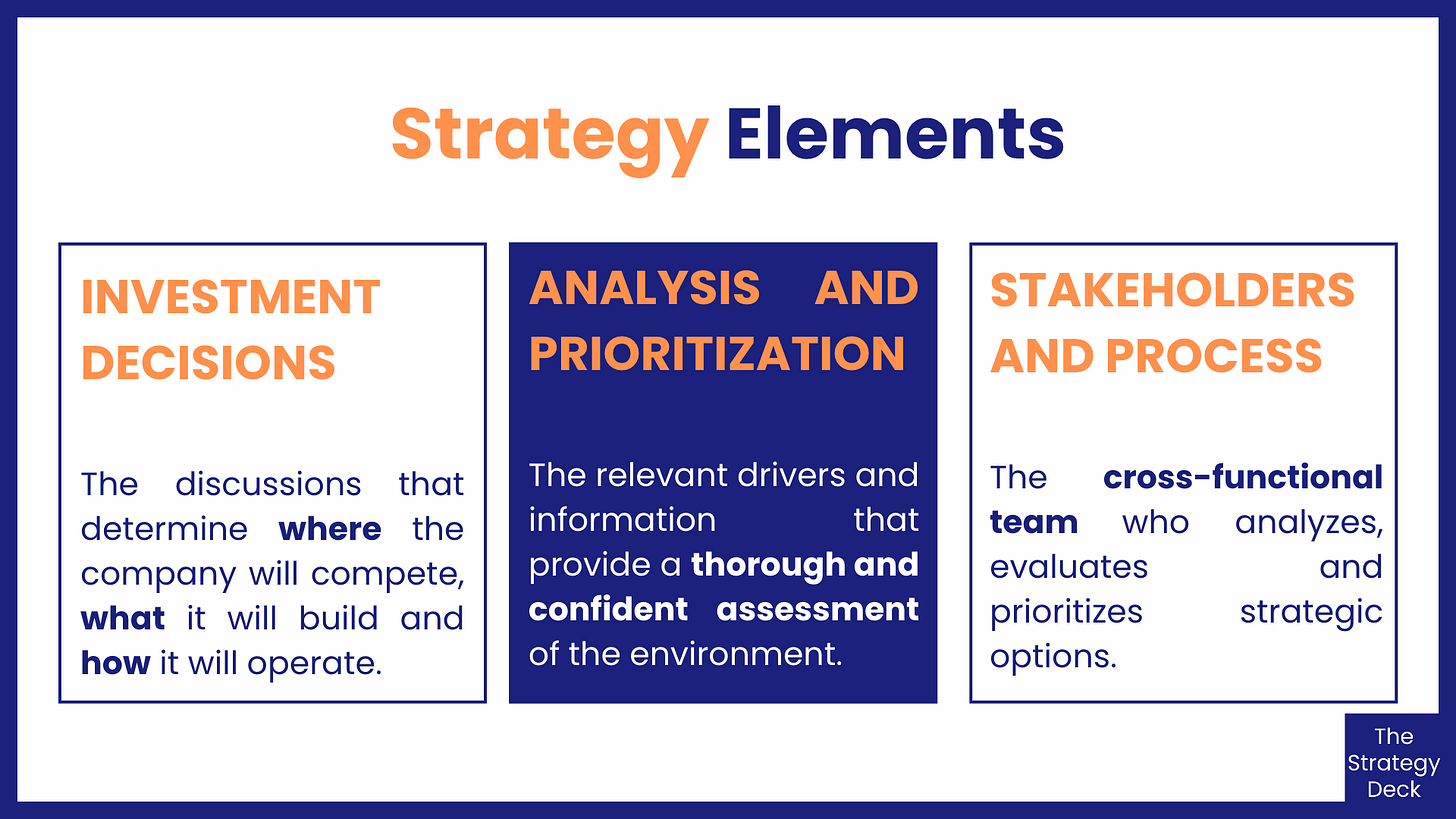Strategy Is About Confident Decision-Making
Business Confidence Comes From Understanding the Trade-Offs that You Are Making and Their Impact
Strategy is the science of business decision-making. Its purpose it to ensure success in market and secure company profitability.
The practice of strategy needs to cover three fundamental elements:
The investment decisions needed to grow and drive the operations of the company
The analysis and prioritization that need to happen to make a confident decision
The stakeholders that need to be involved and the deployment process
The investment decisions refer to the discussions that determine where the company will compete, what it will build and how it will operate. The analysis and prioritization elements are about the relevant drivers and information that provide a thorough and confident assessment of the market and organizational environment. And the stakeholders and process are the cross-functional team who analyzes, evaluates and prioritizes the strategic options available to the company.
At the deeper level, strategy is about the trade-offs that a company needs to make. Confident decisions come from understanding why a choice between different paths is necessary and what are the implications of each of the available options. Strategy work clarifies the impact and the scope of critical trade-offs and guides you in choosing the best option.
Types of strategy work include:
Business Strategy - Analyzes the business environment, market opportunities and competitive dynamics and decides where to compete, how to organize the value chain and what competitive advantage to build.
Product Strategy - Analyzes customer segments and competitor products and decides what products, services or platforms to build and how to deliver value.
Strategic Planning - Analyzes the functional make-up of the organization and its alignment with the strategy and plans operations, resourcing and contingency responses.
Business Strategy saves the day when:
…you need to grow the business into the next phase or an adjacent market
…you are facing strong competition and need to build competitive advantage
…you are confronted with major market shifts at the technologica, financial, social or regulatory level
Great Business Strategy provides you with:
A well-documented evaluation of the market and the industry
Wide-ranging market opportunity analysis
Distinct and clear paths for business growth
Deep understanding of competitive dynamics
Honest assessment of company performance and its drivers
Solid valuation of ROI of strategic initiatives
Product Strategy saves the day when:
...you are in a commoditized market and you need to differentiate your product
...you are facing shifts in the behavior of your target customer segments
...you are in a saturated market and need to grow into an adjacent segment
Great Product Strategy provides you with:
Deep understanding of customer segments
Clearly articulated product value proposition
Honest assessment of product appeal and usage
Efficient design of marketplace governance systems
Several distinct layers of network effects
Clear ROI of core product features and services
Strategic Planning saves the day when:
...you need to improve organizational alignment and cross-functional collaboration
...you are implementing major strategic initiatives and organizational changes
...you need to increase the impact of your teams to your business objectives
Great Strategic Planning provides you with:
Well-articulated objectives and metrics
Detailed and focused cross-functional processes
Realistic scenario and contingency response options
Thorougly informed feasibility assessment
Viable ways to track metrics and performance
Honest assessment of operational bottlenecks
This is a general framework that explains the fundamental elements needed to develop great strategy. To put it in practice, you need to build a plan based on the specifics of your market, company and business challenges.
Download the full Strategy Guide from my Resources page.









